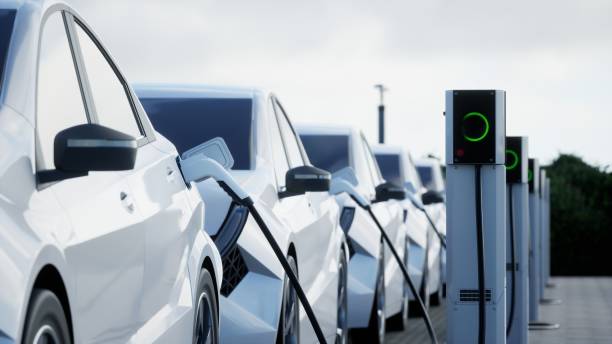Charging Your Car at Home Like a Pro

Getting an electric car is exciting, but figuring out how to charge it at home can feel pretty overwhelming at first. The good news is that once you understand the basics, home charging becomes way easier than going to gas stations. You just plug in when you get home and wake up with a full battery every morning.
Most people think charging an electric car at home is complicated, but it’s actually pretty straightforward once you know what you’re doing. The key is understanding what kind of setup works best for your situation and getting it installed properly from the start.
Understanding Your Home’s Power Situation
Before you can charge like a pro, you need to know what your house can actually handle. Most homes have either 100-amp or 200-amp electrical service coming in from the street. This determines how much power your house can use at one time for everything – lights, appliances, air conditioning, and potentially car charging.
Older homes with 100-amp service might need upgrades to handle EV charging safely. If your house was built before the 1980s, there’s a good chance you’ll need some electrical work before adding a car charger. Newer homes with 200-amp service usually have more room for additional electrical loads.
Your electrical panel is like the command center for all the power in your house. Adding EV charging means installing a new circuit breaker and running heavy-duty wiring to wherever you want to charge your car. This isn’t a DIY job – you need a qualified electrician who knows local codes and safety requirements.
The location where you want to charge matters too. Garages are the most popular choice because they’re protected from weather and close to your electrical panel. Driveways work too, but the charger needs to be weatherproof and the wiring run might be longer and more expensive.
Different Types of Home Charging
There are basically two levels of charging you can do at home, and they work very differently from each other. Understanding the difference helps you pick the right setup for your needs and budget.
Level 1 charging uses a regular 120-volt outlet, just like what you’d plug a lamp into. Every electric car comes with a Level 1 charging cord, so you can technically start charging right away without any installation. The problem is that Level 1 charging is really slow – it might take 20 hours or more to fully charge a depleted battery.
Level 2 charging uses 240-volt power, like what runs your electric dryer or oven. This is where most people want to end up because it’s much faster. A Level 2 charger can fully charge most electric cars in 4 to 8 hours, which means overnight charging works perfectly for daily driving.
Installing Level 2 charging requires professional electrical work. You need a dedicated 240-volt circuit, proper wiring rated for the electrical load, and a charging station designed for outdoor or garage use. For homeowners considering this upgrade, professional ev charger installation sydney can ensure everything gets done safely and meets local electrical codes.
The charging speed depends on both your home’s electrical setup and what your car can accept. Some cars can handle 40 amps of charging current, while others max out at 32 amps or less. Your electrician can help match the installation to your specific vehicle’s capabilities.
Picking the Right Charging Equipment
Not all home EV chargers are created equal. Some are basic units that just deliver power, while others have smart features that can save you money and make charging more convenient.
Basic Level 2 chargers are the most affordable option. They plug into a 240-volt outlet and deliver power to your car when it’s connected. These work fine if you just want simple, reliable charging without extra features.
Smart chargers can connect to your home’s Wi-Fi and be controlled through smartphone apps. They let you schedule charging for off-peak hours when electricity rates are lower, monitor your energy usage, and get notifications when charging is complete. Some can even integrate with home solar systems to charge using clean energy when the sun is shining.
Hardwired chargers get connected directly to your electrical system without a plug. They’re more permanent and often allow for higher charging speeds, but they’re also more expensive to install and harder to take with you if you move.
Weather protection matters if your charger will be mounted outside. Look for units rated for outdoor use in your climate. Some chargers come with built-in cable management to keep charging cords neat and out of the way when not in use.
Getting the Installation Done Right
Professional installation is really important for safety and code compliance. EV chargers draw a lot of power, and improper installation can create fire hazards or damage your home’s electrical system.
Your electrician will start by evaluating your current electrical panel and service capacity. They’ll calculate how much additional load the EV charger will add and make sure your system can handle it safely. If upgrades are needed, they’ll explain what’s required and why.
Permits are usually required for EV charger installations. Your electrician should handle pulling the proper permits and scheduling inspections with local authorities. This ensures the work meets safety codes and won’t cause problems with your homeowner’s insurance.
The actual installation involves running heavy-duty wiring from your electrical panel to the charging location. This might mean going through walls, attics, or underground depending on your home’s layout. Professional installers know how to route wiring safely and make connections that will last.
Final inspection and testing make sure everything works properly and safely. Your electrician should test the charging system with your car to verify proper operation before considering the job complete.
Smart Charging Strategies
Once your home charging system is installed, there are strategies that can save money and make the experience even better. Most electric utilities offer time-of-use rates that charge different amounts for electricity depending on when you use it.
Off-peak charging usually happens late at night or early morning when demand for electricity is low. Utilities often offer much cheaper rates during these hours. Smart chargers can automatically start charging during off-peak periods, saving significant money over time.
Load balancing helps if you’re worried about your home’s electrical capacity. Some smart charging systems can monitor your home’s total electrical usage and adjust charging speed to avoid overloading your electrical service.
Solar integration is becoming popular for homeowners with solar panels. Smart chargers can be programmed to use excess solar power for car charging during sunny days, reducing reliance on grid electricity and maximizing the value of your solar investment.
Preconditioning your car’s battery while it’s still plugged in can improve efficiency and extend battery life. Many electric cars can warm up or cool down their batteries using grid power instead of battery power, which means more range when you unplug.
Avoiding Common Mistakes
Even with professional installation, there are mistakes that can reduce the effectiveness of your home charging setup or create ongoing problems.
Undersizing the electrical circuit is a common issue. If your charger is capable of 40-amp charging but gets installed on a 30-amp circuit, you’ll never get full charging speed. Make sure your installation matches your charger’s capabilities and your car’s requirements.
Poor location choices can make charging inconvenient or cause damage over time. Chargers mounted too low might get damaged by parking mistakes. Units installed in areas that collect water or snow might have reliability problems.
Skipping surge protection can be expensive if electrical problems damage your charger or car. Quality surge protection devices cost relatively little compared to replacing damaged charging equipment.
Not planning for future needs might mean upgrading again sooner than expected. If you might get a second electric car or a vehicle with faster charging capabilities, consider installing infrastructure that can handle higher power levels from the start.
Making It Work for Your Life
The best home charging setup is one that fits seamlessly into your daily routine. Most people find that plugging in when they get home becomes as automatic as locking the front door.
Charging overnight works well for most people because cars sit unused for 8-12 hours anyway. You wake up with a full battery and never have to think about stopping for fuel during your daily routine.
Smart home integration can make charging even more convenient. Some systems can automatically start charging when your car arrives home or adjust charging based on your calendar and planned trips.
Backup power considerations are worth thinking about if you live in an area with frequent power outages. While you can’t use your EV charger during outages, some electric cars can actually power your house through special equipment.
Living the Electric Life
Once you get home charging figured out, the whole electric car experience becomes much more convenient than traditional gas cars. You start each day with a full tank, never have to stop at gas stations for daily driving, and often save money on fuel costs.
Home charging gives you energy independence and convenience that’s hard to match. No more detours to gas stations, no more standing outside in bad weather while filling up, and no more worrying about gas prices. You just plug in at home and let electricity do the work.
The technology keeps getting better too. New chargers are faster, smarter, and more reliable than earlier generations. As electric cars become more popular, home charging solutions continue improving to meet growing demand.
Getting set up with proper home EV charging is one of those improvements that makes daily life noticeably better. Once you experience the convenience of waking up with a full battery every morning, you’ll wonder why anyone would want to go back to gas stations.



